- Author Curtis Blomfield [email protected].
- Public 2023-12-16 20:44.
- Last modified 2025-01-23 17:01.
Caries (lat. caries "rotting") is a slow process of depolarization and destruction of the hard tissue of the tooth with the formation of a carious cavity in the dentin. Scientists still cannot give an accurate conclusion about the causes of dental caries.
Prevalence
Traces of dental pathology go deep into the past. In the course of archaeological research, it was proved that such a disease occurred in people who lived about 5,000 years ago. This pathology is the most common today (affecting over 93% of people). In children, it leads among chronic diseases and occurs 6-8 times more often than bronchial asthma, which occupies the 2nd place. By the time they leave school, 80% of teenagers already have caries, and 98% of people have fillings. According to statistics, caries is less in Africa and Asia.
Etiology of the phenomenon
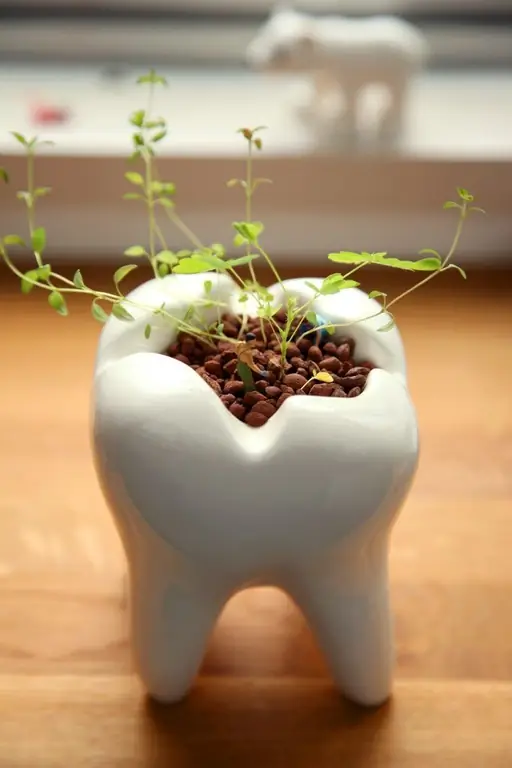
Currently, the occurrence of dental caries is associated with the fact that the pH of saliva changes on its surface, there is a dentalplaque with bacteria, fermentation of carbohydrates (glycolysis) occurs. To this is added the activity of acid-forming microflora. And already under the influence of organic acids, tooth damage occurs in the future.
Cariogenic mouth bacteria include acid-forming streptococci (Streptococcusmutans, Str. sanguis, Str. mitis, Str. salivarius) and some lactobacilli.
Although tooth enamel is considered the hardest tissue in the body, like feldspar, its hydroxypatites are very sensitive to acids and begin to crumble already at pH 4.5. After each exposure of these substances to the protective coating, its inorganic components dissolve and remain in this condition 2 hours. If this happens regularly throughout the day, then the pH will remain in the acid zone for a long time, in such an environment the buffering properties of saliva do not have time to restore it, and the enamel begins to irreversibly break down.
A carious cavity forms on average within 4 years. And since the root of the tooth is softer, here the process occurs 3 times faster. If you are fond of sweet tooth decay can form within a few months.
Factors of caries appearance
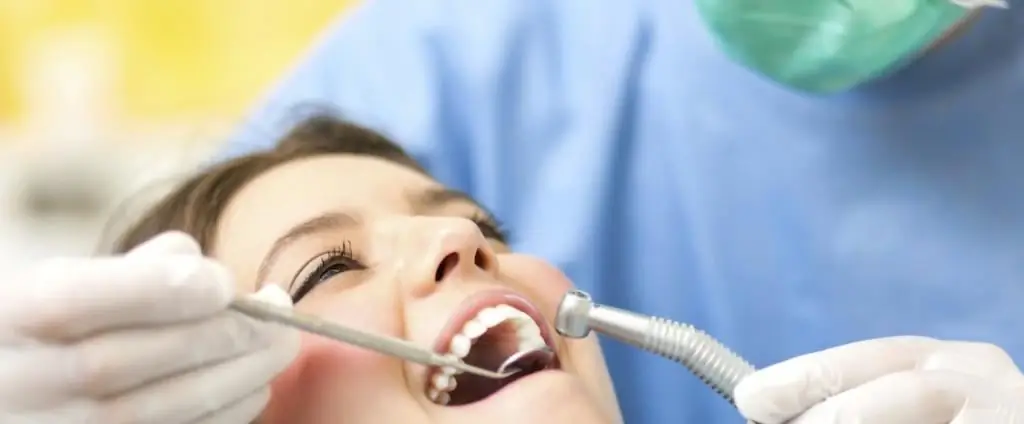
The main for the occurrence of caries are 4 starting points:
- caries susceptibility of the tooth surface;
- glycolysis;
- cariogenic bacteria;
- time.
The counteraction to these negative factors is:
- Daily brushing to remove plaque.
- Saturation andenamel fluoridation - by changing the composition of water by adding this substance, as well as with its presence in toothpaste. It is especially important to take such measures for babies. According to WHO recommendations, fluoridation of drinking water leads to a decrease in the incidence of caries by 30-50%.
Theories of the origin of caries
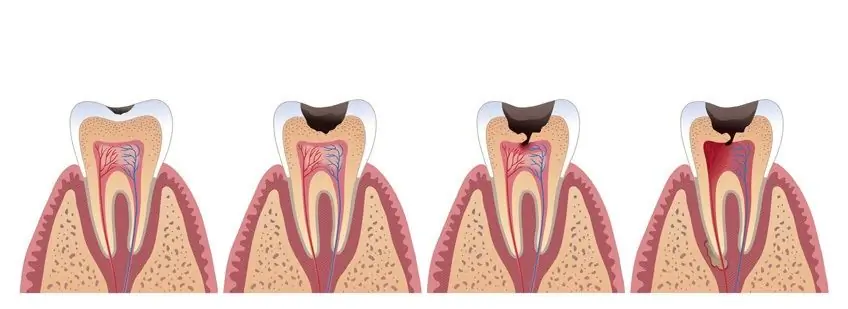
Currently, there are more than 400 theories of caries. Each of them has some truth, but they cannot affect all aspects of the pathogenesis of the disease.
The authors consider only individual causes, so all theories of caries can be divided into two groups. The creators of localistic concepts explain the origin of destruction by the influence of exogenous factors (saliva, plaque and calculus, bacteria, exposure to acids, etc.). The authors of biological theories talk about the influence of endogenous disorders.
The cause of caries was tried by ancient doctors - Hippocrates and Galen.
In the XVII-XVIII centuries. the vital theory was popular, according to which dental pathology occurs as a result of internal tooth decay.
In the XVIII century. chemical theories of the occurrence of caries appeared. So, Birdmar (1771) spoke about the effect of inorganic acids from food on the tooth. The discovery of the microscope allowed A. Leeuwenhoek (1681) to discover "the smallest animals" in the tissues of a decayed tooth.
Two centuries later, Leber and Rottenstein (1867) described a particular type of microbe they believed to be responsible for caries.
They also did not deny the influence of acids. On themthe basis was formed in 1881, Miller's very progressive chemical-parasitic concept in his time. According to this theory of caries, the destructive process goes through 2 stages.
In the beginning, the inorganic part of the tooth enamel dissolves under the influence of lactic acid, which is formed in the mouth as a result of the fermentation of sugars with the participation of acid-forming microorganisms.
Further, this compound lowers the pH of the saliva, and the hard tissue is demineralized. And at stage 2, dentin is already being destroyed under the influence of enzymes produced by bacteria.
Acid itself cannot act on dentin, because it consists of complex protein molecules.
Later, Miller's mistake was revealed - bacteria are already involved from the 1st stage of destruction. To confirm his assumptions, the scientist conducted a very interesting experiment: in 1884 he managed to create caries in the tooth artificially - he took he althy teeth and left them in a mixture of thoroughly chewed bread, meat and a small percentage of sugars (2-4%) - for 3 months at temperature 37 ºС. And dental pathology manifested itself.
Caries really develops more often on chewing and proximal surfaces, i.e. where bacteria linger more and food remains roam. But the theory does not explain many points: it has been established that the reaction of saliva is neutral or slightly alkaline (pH - 6.8-7.0), and it cannot cause enamel demineralization.
Miller's theory does not explain such facts as the development of caries in people who do not eat sweets and, conversely, its absence in those who eat such foods in largequantities. Otherwise: the conditions in the mouth are not identical to the experience.
The causes of cervical caries are that the selective lesion at certain points on the surfaces of the teeth is due to demineralization, which occurs as a result of the local formation of acid in areas covered with soft plaque (the so-called "dental plaques"). And they just occur more often in the cervical region. According to the studies of Soviet authors (VF Kuskov et al.), not only streptococci, but also other bacteria have the ability to ferment polysaccharides. In addition, “dental plaques” create conditions for exposure of tooth tissues not only to acids, but also to numerous enzymes from microbes.
The causes of cervical caries and treatment determine each other, and subsequently therapy begins with a deep cleaning of the tooth surfaces.
In the work of 1928, D. A. Entin revealed a close dependence of the tooth and enamel on the physicochemical composition of saliva (an external factor affecting the condition of the teeth) and blood (an internal factor). This is the basis of his theory of caries.
Saliva and blood are unstable values, they change with various unfavorable processes in the body. In diseases, the natural optimal nutrition of dental tissue is disturbed, and it becomes vulnerable to cariogenic bacteria.
The scientist considered the tooth as a semi-permeable biological membrane at the border of 2 environments:
- external - saliva;
- internal - blood and lymph pulp of the tooth.
Depending on the composition and properties of saliva, it changesthe state of enamel colloids (they swell or wrinkle), and their permeability also changes.
The protective coating in this case changes its charge and electroosmotic currents, which normally move centrifugally from the tooth pulp to the enamel and provide normal tissue nutrition, here the opposite movement begins - centripetal - from saliva to the pulp.
When the potential changes, bacteria are attracted to the enamel, and its increased permeability facilitates their penetration.
It has been proven that these processes actually occur, but without local caries factors they do not happen. The progressiveness of the theory - in the description of the connection between the state of the body and destruction, minus - in considering the bioprocess only as a physical and chemical reaction.
Biological theory
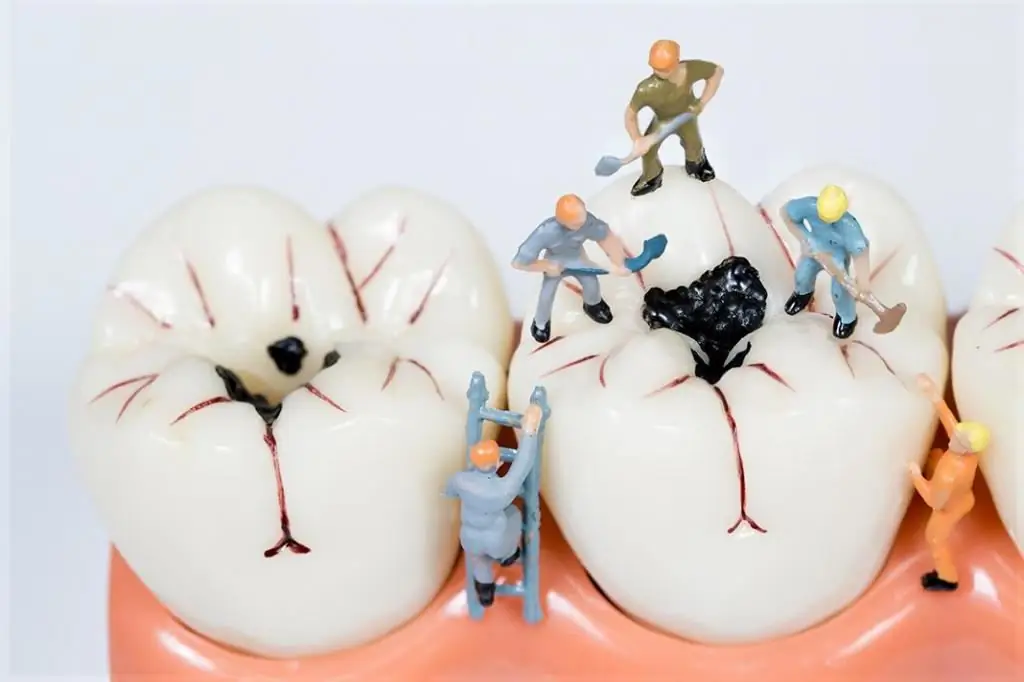
In 1948, the Russian scientist I. G. Lukomsky put forward his theory of the occurrence of dental caries, in which he argued that the disease begins with a deficiency of vitamins D and B1. The nutrition of the tooth cells (odontoblasts) is thus disturbed, and caries occurs.
Its essence is that the enamel remains intact with the proper functioning of the odontoblast. The theory is of historical interest only.
There is also the concept of A. E. Sharpenak (1949) - he argued that the primary link in the development of caries is the destruction of the protein matrix of hard tooth tissues. It occurs when there is a deficiency of the amino acids lysine and arginine, as well as B vitamins.
But it has been proven that such changes in the tooth do not occur in the stain stage. Destructiondentin proteins is not the primary process, but it has a significant role in the progression of caries. Also clinically confirmed anti-caries effect of vitamin B.
ZNIIS based on many different materials created a working concept of the pathogenesis of dental caries (AI Rybakov, 1967). It is based on data on the uneven development of the process in different life periods of development. Here, the interdependence of internal and external factors is noted.
The formation of the dentoalveolar system begins in embryogenesis, and from that time on, the study of caries should be considered.
4 main periods are distinguished:
- intrauterine (from 5 weeks to 5 months);
- time of childhood and adolescence, the greatest restructuring of the body (from 6 months to 6 years and then until the age of twenty);
- optimal physiological balance in the adult period (from 20 to 40 years old);
- a period of time accompanied by insufficiency of some body functions (after 40).
Carious process is considered as polyetiological pathological.
In the first phase (from 6 months to 6 years), past diseases with a lack of oral care, bite deformities, and injuries can serve as a background for caries.
At the age of 6-7 there is an increase in the consumption of carbohydrates and there is a deficiency of fluorine in the body. There are violations of salivation and changes in the pH of the oral cavity.
In the period from 12 to 14 years of age, dental plaques become more important, quite frequent at this time. The trigger for this is hormonalperestroika.
At the age of 17-20, heavy loads on the liver, insular apparatus begin.
At 20-40 years old, somatic diseases, pathologies of the dentoalveolar system may occur (teething of wisdom teeth is usually difficult, tissue injuries, malocclusion may occur).
The period of withering of the body (40 years or more) is characterized by a decrease in the activity of the sex and other endocrine glands, diseases of the oral cavity.
The trigger mechanism in this case is malnutrition and local changes in the oral cavity.
Conclusion: both general and local provocative causes play a big role in the origin of caries.
Factors of caries are common:
- functional state of the nervous system;
- the presence of common diseases that cause changes in metabolic processes;
- poor-quality composition of the diet;
- hereditary predisposition;
- hormonal disorders.
Local factors:
- enzymes;
- cariogenic microorganisms;
- excess carbohydrate food;
- presence of plaque or plaque;
- malnutrition;
- malaligned teeth with crowding;
- changes in the quality and quantity of saliva;
- inferiority of dental structures.
For the appearance of pathology, these risk factors for caries must be summed up to a certain threshold level, then the enamel begins to collapse. The disadvantage of the concept of A. I. Rybakov is the abundance of named etiological causes, but they are onlycontributing rather than being the root cause.
Current interpretations
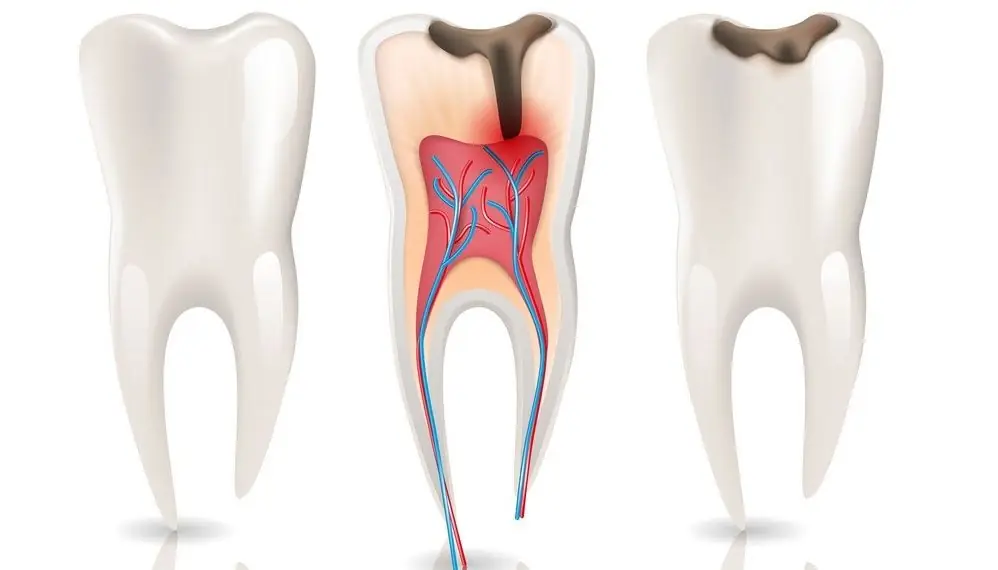
The modern theory of the occurrence of caries, founded by E. V. Borovsky and other co-authors (1979, 1982), notes pathology as a consequence of the influence and interaction of several groups of factors - general and local.
What does this mean? For destructive processes, a trigger mechanism for the occurrence of dental caries is needed. This is an obligatory participation of the microflora in the mouth, together with glycolysis.
Principles of treatment
Remineralizing therapy is carried out in the stain stage. The course of treatment consists of 10 procedures, during which the teeth are nourished with calcium applications, Remodent solutions (a natural remedy) and fluorine-containing preparations (sodium fluoride 2-4%). It is better to be treated by a dentist in a clinic, who will first clean the tooth, then etch the surface with citric acid, rinse with water and apply a solution of 10% calcium gluconate or hydrochloride for 15 minutes.
Cavity filling
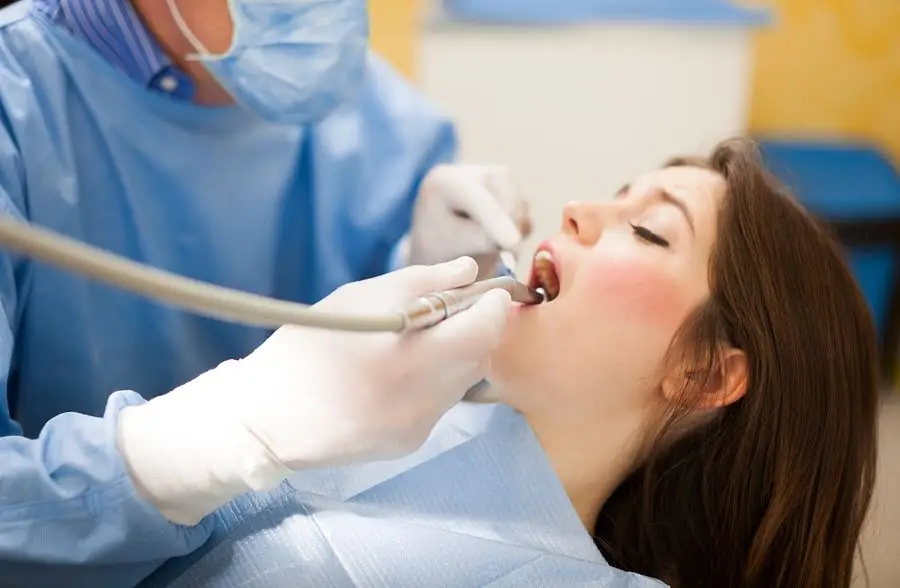
Carried out with varying degrees of negative processes: superficial, medium and deep caries. The affected tissues are removed, and the cavity itself is sealed.
Steps:
- Cleaning of the patient's plaque and adjacent contact teeth. There are different methods: ultrasound for hard plaque, for soft plaque - abrasive pastes or brushes.
- The color of the tooth is determined on a special scale - this is necessary for the exact selection of the shade of the filling material.
- Pain relief - local anesthesia.
- Drilling of carious tissues - cavities are given the correct shape with drilling of the overhanging edges of the enamel.
- Then all carious dentin is removed. If at least a particle remains, pulpitis or periodontitis will develop under the filling.
- Tooth separation from saliva is an important stage! Previously, this was done with ineffective cotton rolls, for the last 10 years by Cofferdam. It is a latex film with a hole for the teeth.
- Next, the existing cavity is treated with antiseptics.
- Then etching the enamel with a phosphoric acid gel so that the adhesive (something like glue) can diffuse into the dental tissues. After soaking, it is illuminated by a photopolymerization lamp.
- Applying a gasket under the seal - it is placed on the bottom and serves as an insulator. This is necessary to establish a seal.
- Filling - it restores the shape of the tooth and its chewing surface. The composition is made of photopolymer composite materials. Each layer is applied sequentially and cured with a curing light.
- Grinding and polishing the tooth filling completes the treatment process.
Laser treatment
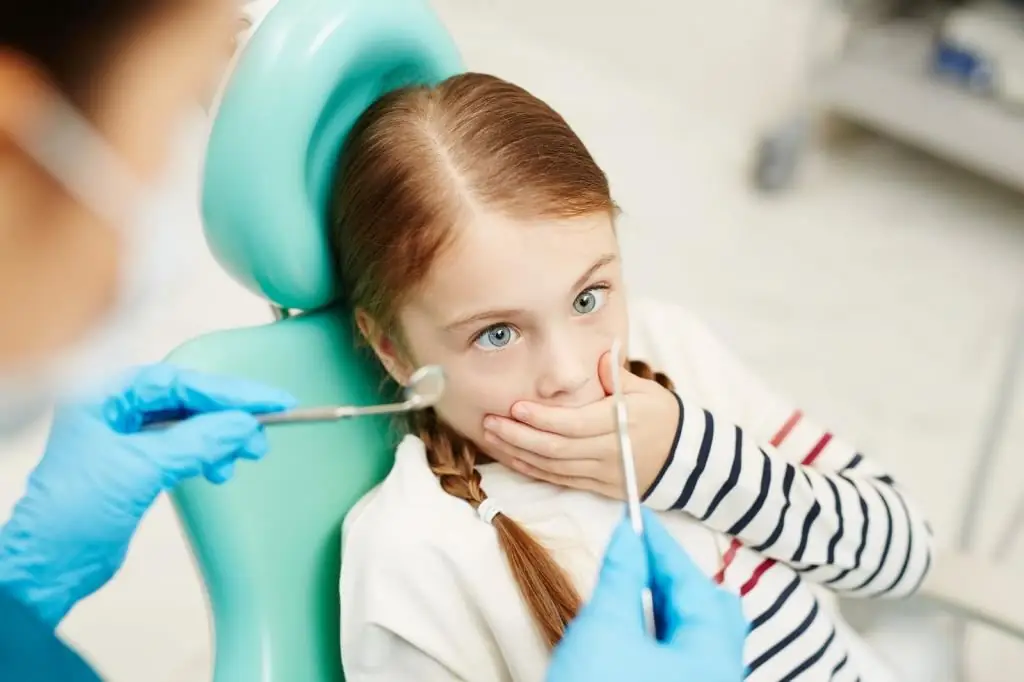
The main plus is that it is completely painless and that there are no microtraumas of the enamel. In parallel, sterilization takes place, so microbes do not get under the seal.
Ozone treatment
Ozone destroys bacteria completely. He althy tissues are not affected. Method applicablefor initial caries.
Infiltration
A special gel is applied to the affected tooth, the components of which react chemically with the enamel. They simply dissolve the affected areas. After that, the surface is cleaned with alcohol and dried. There is no pain, and the whole process lasts no more than 15 minutes.
Air blasting
If caries is not yet in advanced form, small cavities can be cleaned by air-abrasive action on the enamel. A strong jet of aluminum oxide particles with a directed jet under pressure knocks out damaged tissues, and he althy parts remain. Such blows are more effective than a drill.
Now you know about the causes of caries and the treatment of dental pathology. Caries is a polyetiological disease. Today, treatment with a drill prevails everywhere. Modern methods are used only for prevention.






